How to Germinate Pomegranate Seeds: Easy Guide
- February 27, 2024
- 4 comment
Pomegranates are not only delicious but also packed with nutrients, making them a great addition to any garden. Germinating pomegranate seeds can be a rewarding experience for gardeners. This guide will walk you through the steps of successfully germinating pomegranate seeds.
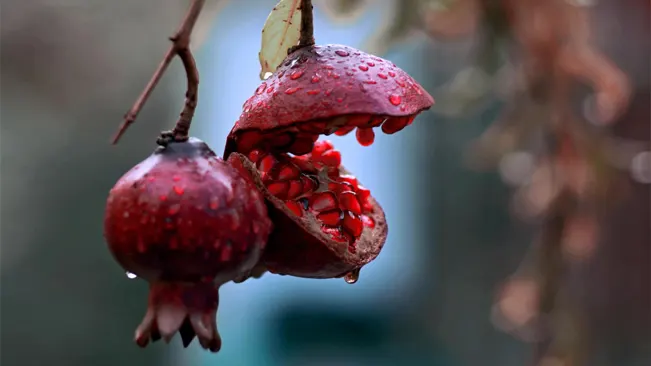
List on How To Germinate Pomegranate Seeds
- Materials Needed
- Extracting Seeds
- Pre-Germination
- Monitoring and Care
- Planting the Sprouted Seeds
- Growing Conditions
- Transplanting (If Necessary)
Nutritional Benefits of Pomegranate
| Benefit | Description |
|---|---|
| Rich in Nutrients | Pomegranates are loaded with important nutrients, including Vitamin C, Vitamin K, Folate, and Potassium. |
| Antioxidant Properties | They contain high levels of antioxidants, which help protect the body from free radicals and reduce oxidative stress. |
| Anti-inflammatory Effects | Pomegranates have compounds that may help reduce inflammation, which is key in combating various chronic diseases. |
| Heart Health | Consuming pomegranates may improve heart health by reducing blood pressure, cholesterol levels, and arterial plaque. |
| Cancer Prevention | Some studies suggest that pomegranates can help in the fight against certain types of cancer, particularly prostate and breast cancer, by inhibiting cancer cell growth. |
| Digestive Health | The fiber in pomegranates aids in digestion and can help with bowel regularity. |
| Joint Health | Pomegranate extract might reduce symptoms of arthritis and joint pain. |
| Memory Improvement | There is evidence that pomegranate consumption can improve memory function, especially in middle-aged and older individuals. |
| Antibacterial and Antiviral | Pomegranates have antibacterial and antiviral properties which may help reduce the effects of various infections, including dental conditions. |
| Skin Health | The nutrients and antioxidants in pomegranates contribute to healthy, radiant skin and may help in skin cell regeneration. |
| Exercise Performance | Pomegranate juice can enhance exercise performance by improving blood flow, potentially leading to more stamina and reduced muscle soreness. |
Materials Needed
- Pomegranate seeds
- Paper towels
- Plastic bags or a container
- Potting soil
- Pots or a garden space
- Water
Extracting Seeds
Start by cutting open a ripe pomegranate. Carefully remove the seeds, also known as arils, and rinse them under cool water to remove any pulp. It’s important to use seeds from a fresh pomegranate for higher germination rates.
Selecting the Right Pomegranate
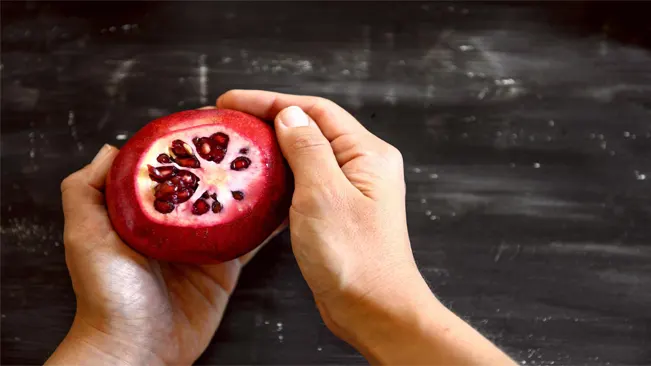
- Choose a ripe pomegranate. It should feel heavy for its size, indicating juiciness, and the skin should have a deep, vibrant color without any cracks.
Cutting Open the Pomegranate
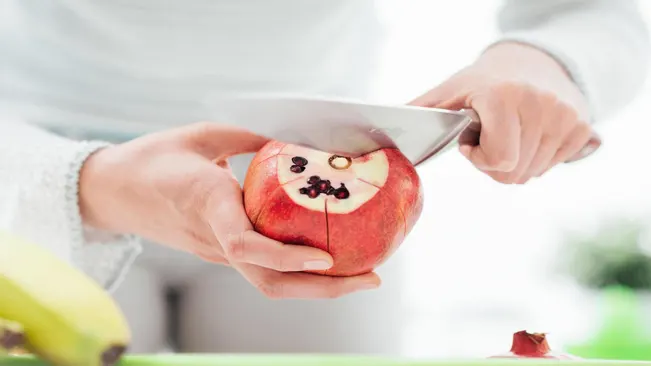
- Cut the crown (top) of the pomegranate off.
- Score the skin in quarters from the top to bottom. Be careful not to cut too deeply; you want to avoid damaging the seeds inside.
- Gently pull apart the pomegranate along the scored lines. This should divide the fruit into segments.
Removing the Seeds (Arils)

- Over a bowl of water, gently pry out the seeds with your fingers. Doing this underwater helps prevent the juice from splashing and reduces the mess.
- The seeds will sink to the bottom, while the white membrane will float. Remove and discard the floating pieces.
- Another method is to turn the skin inside out and tap the back with a spoon, which helps the seeds fall out more easily.
Cleaning the Seeds
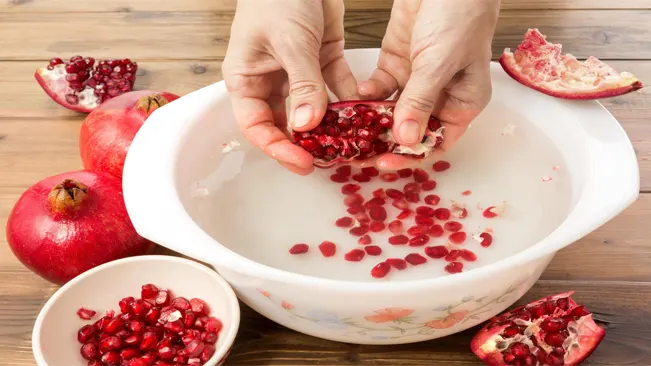
- Once all the seeds are extracted, rinse them under cool, running water. This helps remove any remaining pulp or membrane bits.
- A fine strainer can be useful for this step to prevent seeds from washing away.
Preparing for Germination
- After rinsing, the seeds are ready to be used for germination. It’s important to use them while they are fresh, as dried or old seeds have a lower germination rate.
- If you’re not ready to plant them immediately, the seeds can be stored in a moist paper towel in the refrigerator for a short period.
Pre-Germination
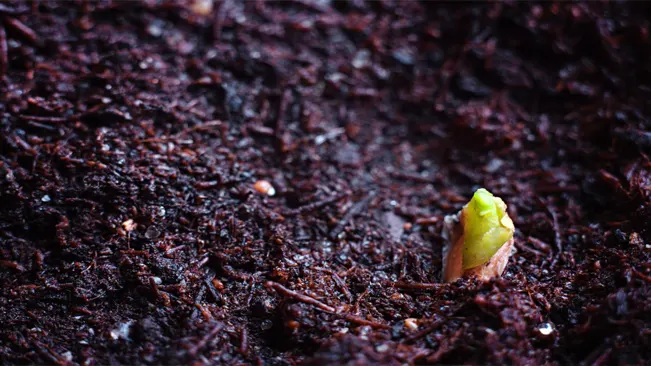
- Moisten the Paper Towel:
- Dampen the paper towel; it should be moist but not overly wet to soften the seed coat and provide necessary moisture for germination.
- Place the Seeds:
- Spread the seeds on one half of the paper towel, ensuring enough space for each seed to sprout without overcrowding.
- Fold the Paper Towel:
- Cover the seeds with the other half of the paper towel to create a moist, warm environment, mimicking natural soil conditions.
- Create a Mini Greenhouse:
- Place the folded paper towel in a plastic bag or sealed container to maintain consistent moisture and protect seeds from drying out.
- Provide Warm Environment:
- Keep the container in a warm place (around 68-77°F or 20-25°C) to provide the warmth necessary for germination.
- Benefits of Pre-Germination:
- Faster Germination: Speeds up the process by providing ideal warmth and moisture.
- Easy Monitoring: Allows for checking progress without disturbing the seeds in soil.
- Higher Success Rate: Identifies viable seeds for planting, leading to better growth outcomes.
- After Pre-Germination:
- Transplant sprouted seeds carefully into soil, handling the delicate sprouts gently to avoid damaging emerging roots.
Monitoring and Care
Importance of Moisture
- Maintaining Moisture: The primary purpose of checking the seeds regularly is to ensure that the paper towel remains moist. This consistent moisture is crucial for germination as it provides the necessary environment for the seeds to sprout.
- Avoiding Overwatering: While the paper towel should be kept moist, it’s important to avoid overwatering. Excessive moisture can lead to mold growth or cause the seeds to rot.
Checking for Sprouts
- Timing: Typically, sprouts will start to appear within 1 to 2 weeks. However, this can vary depending on factors like seed freshness, temperature, and humidity.
- What to Look For: Watch for tiny green shoots emerging from the seeds. These are the first signs of successful germination.
Planting the Sprouted Seeds
Preparing the Soil and Planting Location
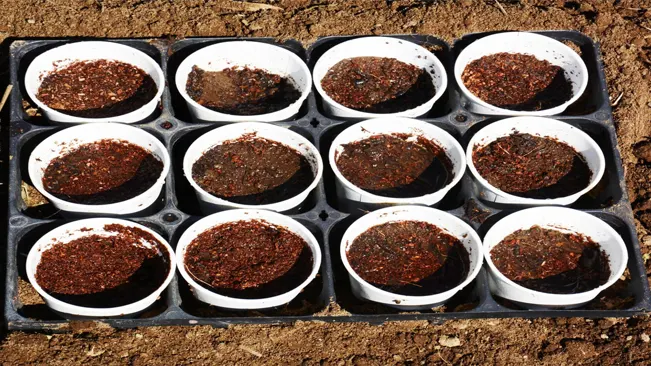
- Potting Soil: Select a well-draining potting mix. Pomegranates prefer soil that is loamy, rich in organic matter, and has good drainage to prevent waterlogging, which can rot the roots.
- Location: If planting in pots, choose containers with drainage holes. For garden planting, select a sunny spot as pomegranates thrive in full sun.
Planting Depth and Technique
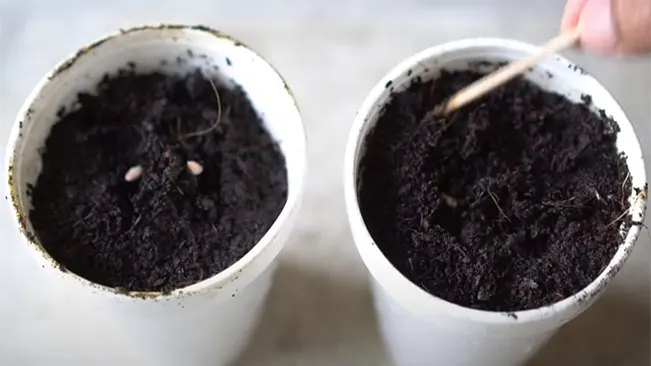
- Depth: Plant the sprouted seeds about ¼ inch deep. This shallow planting helps the delicate sprouts to easily emerge above the soil.
- Technique: Make a small hole in the soil with your finger or a tool. Gently place the sprouted seed in the hole, ensuring the sprout is pointing upwards. Lightly cover it with soil without pressing down too hard.
Watering the Newly Planted Seeds
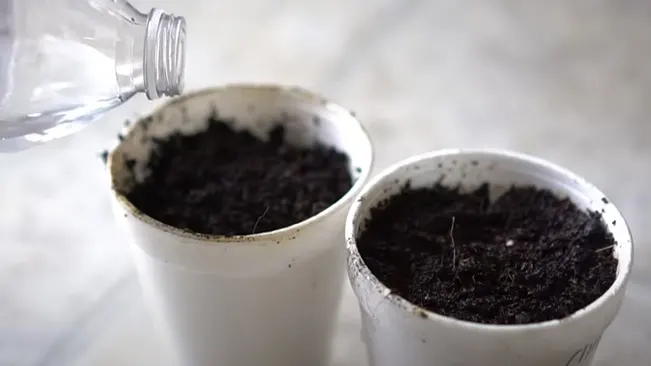
- Gentle Watering: Water the seeds gently to avoid dislodging or burying them too deep. A spray bottle can be a great tool for this, as it provides a soft, even coverage of water.
- Moisture Level: Keep the soil consistently moist but not soggy. Overwatering can be as harmful as under-watering. The goal is to provide a moist environment for root growth without drowning the plant.
Growing Conditions
Place the pots in an area that receives plenty of sunlight. Pomegranates thrive in sunny, warm conditions. Keep the soil consistently moist but not waterlogged.
Sunlight
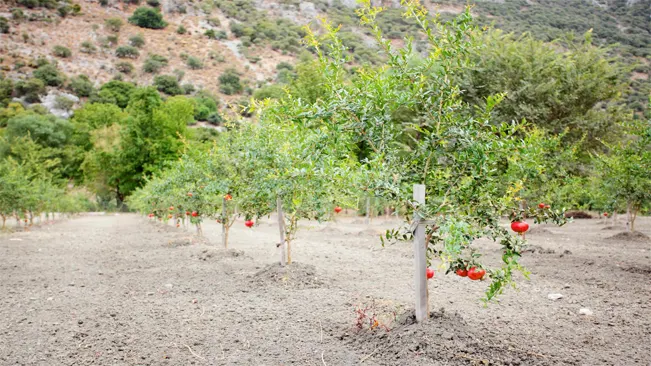
- Intensity and Duration: Pomegranates require full sun for optimal growth and fruit production. This means they should receive at least 6-8 hours of direct sunlight daily.
- Positioning: In cooler climates, positioning them against a south-facing wall can help maximize sun exposure and heat retention.
Temperature
- Optimal Range: Pomegranates flourish in warm conditions. Ideal temperatures range from 68°F to 86°F (20°C to 30°C). They can tolerate hot conditions quite well.
- Frost Sensitivity: Young plants are susceptible to frost damage. In areas with cold winters, it’s advisable to grow pomegranates in pots that can be moved indoors or to a sheltered area during the colder months.
Soil Conditions
- Soil Type: Well-draining soil is crucial. Pomegranates do well in loamy or sandy soil with good drainage. They can tolerate a range of soil types, including alkaline and slightly acidic soils.
- Moisture Management: While the soil should be kept moist, it’s important to avoid waterlogging. Over-watering can lead to root rot and other issues. A balance must be maintained where the soil is consistently moist but not overly wet.
Watering
- Regular Watering: Especially important during the growing season and when the plant is young.
- Reduced Watering: Mature plants are drought-tolerant and can withstand periods of low water. However, for good fruit production, regular watering is recommended.
Air Circulation
- Space: Ensure there is enough space around each plant for air to circulate. This helps reduce the risk of fungal diseases.
- Pruning: Pruning to remove dead or overcrowded branches can improve air circulation and sunlight penetration.
Fertilizing
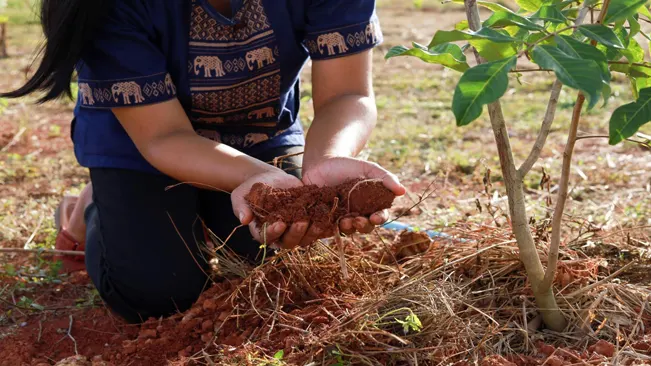
- Initial Fertilizing: Use a balanced, all-purpose fertilizer initially after planting.
- Ongoing Nutrition: As the plant matures, it may benefit from fertilizers higher in potassium and phosphorus, especially to enhance fruiting.
Mulching
- Benefits: Applying mulch around the base of the plant can help retain soil moisture, regulate soil temperature, and reduce weed growth.
- Material: Organic mulch like straw, bark, or compost is beneficial.
Transplanting (If Necessary)
If you started your seeds in pots and plan to move them to a garden, wait until the seedlings are a few inches tall and strong enough to handle the transplant.

Timing for Transplanting
- The best time to transplant pomegranate seedlings is when they are a few inches tall, typically when they have at least two sets of true leaves. This size indicates that they have developed a strong enough root system to handle the transplant.
Preparing the Seedlings
- Before transplanting, gradually acclimate the seedlings to outdoor conditions over a week. This process, known as hardening off, involves placing the seedlings outside for a few hours each day, gradually increasing their exposure to outdoor conditions.
Choosing the Right Location
- Pomegranates need a location with full sun and well-draining soil. They prefer a spot that gets at least 6-8 hours of direct sunlight each day.
Soil Preparation
- Prepare the garden soil by loosening it and mixing in some compost or organic matter to improve fertility and drainage.
Transplanting Process
- Water the seedlings in their pots before transplanting to make the soil moist.
- Dig a hole in your garden that is slightly larger than the root ball of the seedling.
- Carefully remove the seedling from the pot, trying to keep the root ball intact.
- Place the seedling in the hole, ensuring it is at the same depth as it was in the pot.
- Fill the hole with soil and gently press around the base of the seedling.
- Water the seedling thoroughly after transplanting to settle the soil and provide moisture.
Conclusion
Germinating pomegranate seeds is a simple and enjoyable process. With patience and proper care, you’ll be able to grow your own pomegranate plants that can provide delicious fruit for years to come. Remember, pomegranates can take several years to start producing fruit, so patience is key.
FAQs (Frequently Asked Questions)
- How do I extract seeds for germination?
Cut open a ripe pomegranate and gently remove the seeds. Rinse under cool water to remove pulp and separate the seeds for planting. - Can I use any pomegranate seeds for germination?
It’s best to use seeds from a fresh, ripe pomegranate. Avoid using dried or processed seeds as they may not germinate. - Do I need to dry the seeds before planting?
No, pomegranate seeds should be planted while they’re fresh and moist for the best germination results. - How long does it take for pomegranate seeds to germinate?
Germination can take anywhere from 1 to 6 weeks, depending on the conditions. - What is the best temperature for germinating pomegranate seeds?
A warm environment, around 68-77°F (20-25°C), is ideal for germination. - Do I need to soak the seeds before planting?
Soaking is not necessary. You can start by placing them in a moist paper towel to encourage sprouting. - How deep should I plant the seeds?
Plant the seeds about ¼ inch deep in the soil. - What type of soil is best for planting pomegranate seeds?
Use a well-draining potting mix. Pomegranates prefer soil that is loamy and rich in organic matter. - How much light do sprouting seeds need?
Once planted, they should be placed in a sunny area. Pomegranates need plenty of sunlight to grow. - How do I care for the seedlings once they sprout?
Keep the soil moist but not waterlogged. Provide adequate sunlight, and once the seedlings are a few inches tall, you can transplant them if needed.

Kristine Moore
Forestry AuthorI'm Kristine Moore, a seasoned garden landscaping professional with over 30 years of experience. My extensive career has been dedicated to transforming outdoor spaces into stunning, sustainable landscapes. With a deep understanding of horticulture, design principles, and environmental stewardship, I have become a respected figure in the field, known for creating harmonious, visually appealing, and eco-friendly gardens. My commitment to excellence and continuous learning in landscaping trends and techniques has solidified my reputation as an expert in garden design and implementation.
4 comments
How to grow pomegranates on commercial level
Albright
March 1, 2024 4:25 amThank you, its so amazing and courageous, I like planting vegetables and fruits. Well done 
Ntombifuthi Khambule
February 29, 2024 3:14 amI like farming and I must try pomegranates I really appreciate your help and have learnt a lot.

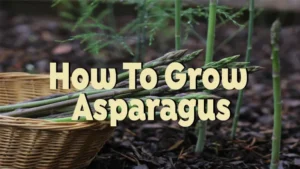
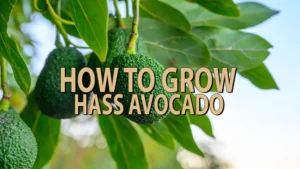

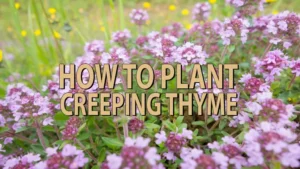




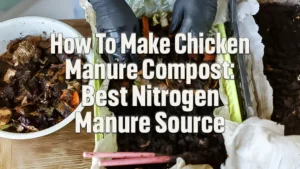


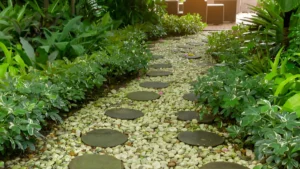
Goodadvice.i enjoy gardening will try this and proper gating as well
Kizito
March 3, 2024 10:09 am